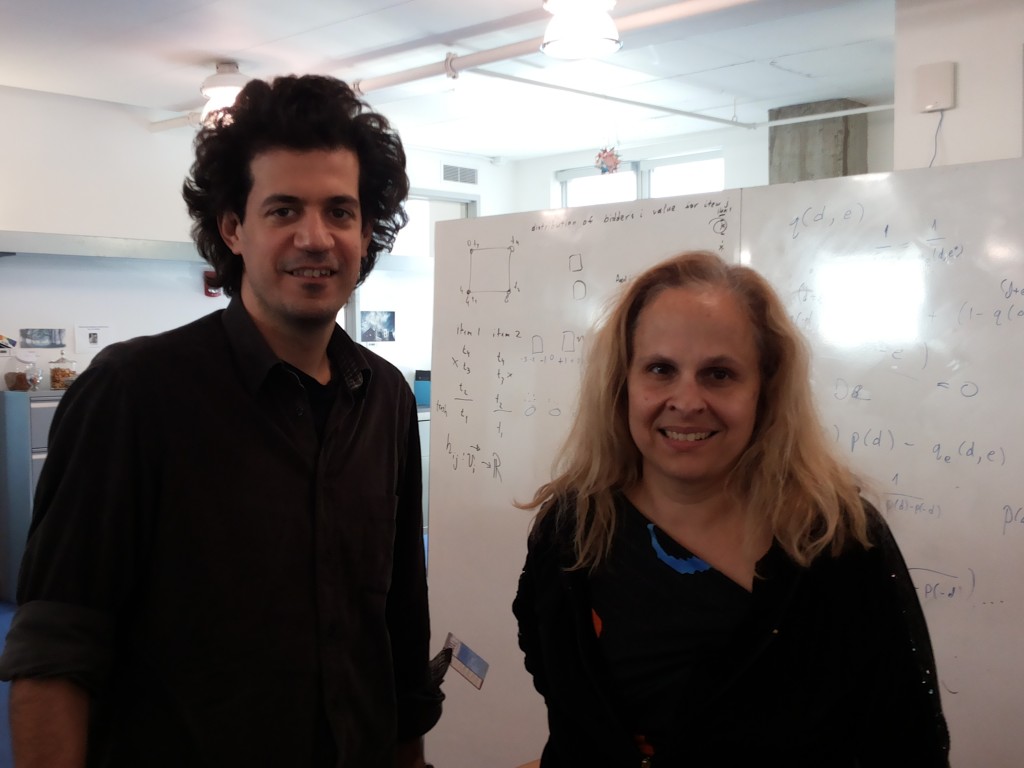This is a guest blog post by Kim Douglas, a student at UMass Lowell. Kim has a BA degree from Emerson College in Animation & Motion Media.
When people ask me what I’m studying, and I tell them that I’m pursuing a degree in computer science, they usually say one of two things.
- “Oh, I totally should’ve done that. Tons of great-paying jobs in that field!”
or,
- “Oh, I totally should’ve done that. But I’m not smart enough.”
I usually just smile politely and deflect, because these conversations tend to happen with adults who are well on their way, doing whatever they’re doing with their lives. But the truth is, responses like this frustrate me.
I wonder if the people with this first response are being earnest; whether their interest is for the right reasons. After all, everybody hates it when their favorite song becomes popular—especially if that song came from a collection of painstakingly curated mixtapes. I’ve only been programming for a few years, and still I feel this way.
Here I am, just halfway up the ladder to the neighborhood treehouse, and I already want to put up a “KEEP OUT!” sign for the kid behind me!

Then I think about how computer science makes me happy, and how it makes other people happy. Now, the second response—“Oh, I totally would’ve done that, but I’m not smart enough”—is even more frustrating. Because chances are, it’s just not true!
These people probably are smart enough, but got intimidated by the steep learning curve nonetheless. Yes, we should blame the media for that, but we should also blame ourselves. People start to see the KEEP OUT signs at a pretty young age.
Wait, come back! We need your hammer to fix our treehouse!
I am a researcher in the Middle School Pathways in Computer Science project, which is designed to make it so that Johnny who lives next door (and, in particular, Sally, Jane, DeShawn, Rudjit, Liliana, Esteban, and Amira) never see the KEEP OUT sign in the first place.
In my first week in project classrooms, an eighth grader—let’s call him Jake—asked me if I went to MIT. Understandable, since App Inventor has MIT literally written all over it.
“No, I go to UMass Lowell.”
“Can you make apps?”
“We make all kinds of cool stuff! So can you.”
“Nah. I’m not smart.”
Inside, I hang my head. I show him a demo app I had made in the fall, as part of the teachers’ professional development. It has pictures of some planets whose buttons play audio files and change colors when you press them. It’s no Candy Crush, but Jake is visibly more interested in it than the text-to-speech button he’d just made.

“Of course you’re smart. You can totally make something like this.”
“I can’t. I told you—I’m not smart, I’m an athlete.”
“Athletes can’t be smart too?”
“Well, they don’t have to. I’m gonna play basketball in college, and all you really need to get in on an athletic scholarship is a C.”
Then I show him an app that another teacher had made—this one is similar in its functionality, but has pictures, text, and audio clips of different people talking about the Ferguson protests. His eyes widen. He takes the tablet from me and starts playing with the buttons.
“I know about this!”
I think at this point in his life, Jake is more excited about making a basketball game app designed to rack up mad points than a Ferguson app designed to provide social commentary. He’s thirteen, after all.
But that’s okay. When he played with the app, he saw people that looked like him. He didn’t see a KEEP OUT sign.
The next week, Jake was a little more engaged in the lesson. He got further than some other kids on that day’s tutorial, and even gave them pointers on fitting the blocks together. They went back and forth between their workstations, laughing at the sounds they could make the tablets produce, playfully chiding each other’s screwups, and peering at how the next kid fit her blocks together.
I think, overall, it’s going pretty well.
For more, see Kim’s blog at http://kmbrlynn.github.io/weblog.






